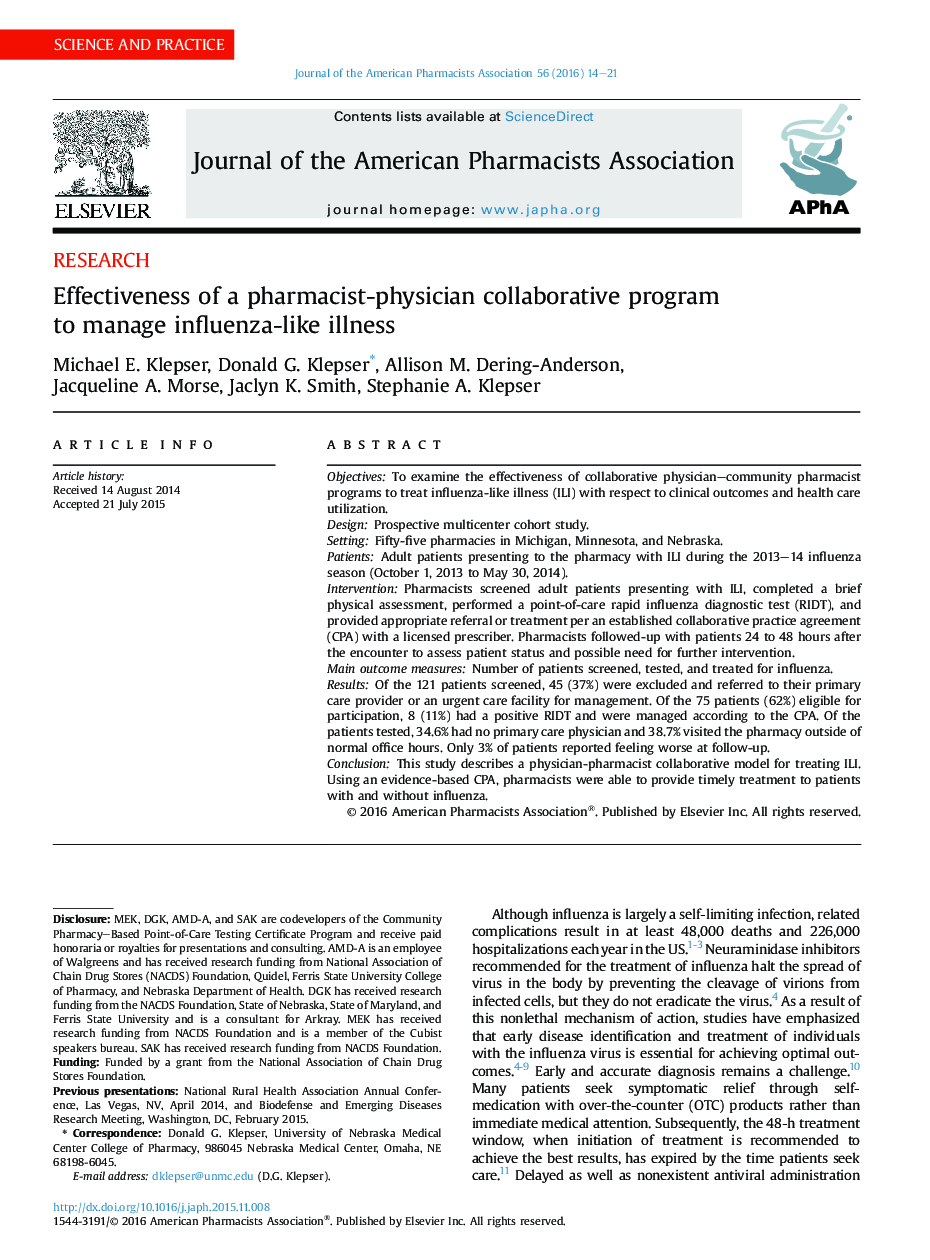| Article ID | Journal | Published Year | Pages | File Type |
|---|---|---|---|---|
| 2542865 | Journal of the American Pharmacists Association | 2016 | 8 Pages |
ObjectivesTo examine the effectiveness of collaborative physician–community pharmacist programs to treat influenza-like illness (ILI) with respect to clinical outcomes and health care utilization.DesignProspective multicenter cohort study.SettingFifty-five pharmacies in Michigan, Minnesota, and Nebraska.PatientsAdult patients presenting to the pharmacy with ILI during the 2013–14 influenza season (October 1, 2013 to May 30, 2014).InterventionPharmacists screened adult patients presenting with ILI, completed a brief physical assessment, performed a point-of-care rapid influenza diagnostic test (RIDT), and provided appropriate referral or treatment per an established collaborative practice agreement (CPA) with a licensed prescriber. Pharmacists followed-up with patients 24 to 48 hours after the encounter to assess patient status and possible need for further intervention.Main outcome measuresNumber of patients screened, tested, and treated for influenza.ResultsOf the 121 patients screened, 45 (37%) were excluded and referred to their primary care provider or an urgent care facility for management. Of the 75 patients (62%) eligible for participation, 8 (11%) had a positive RIDT and were managed according to the CPA. Of the patients tested, 34.6% had no primary care physician and 38.7% visited the pharmacy outside of normal office hours. Only 3% of patients reported feeling worse at follow-up.ConclusionThis study describes a physician-pharmacist collaborative model for treating ILI. Using an evidence-based CPA, pharmacists were able to provide timely treatment to patients with and without influenza.
